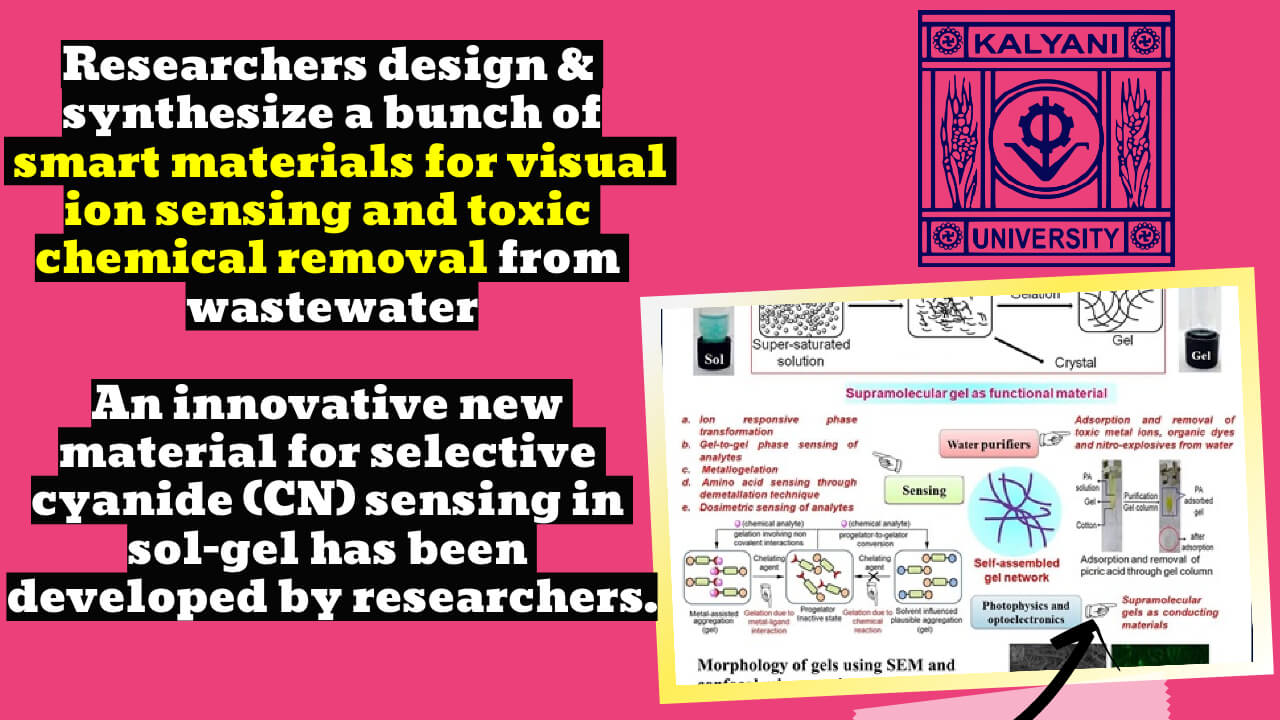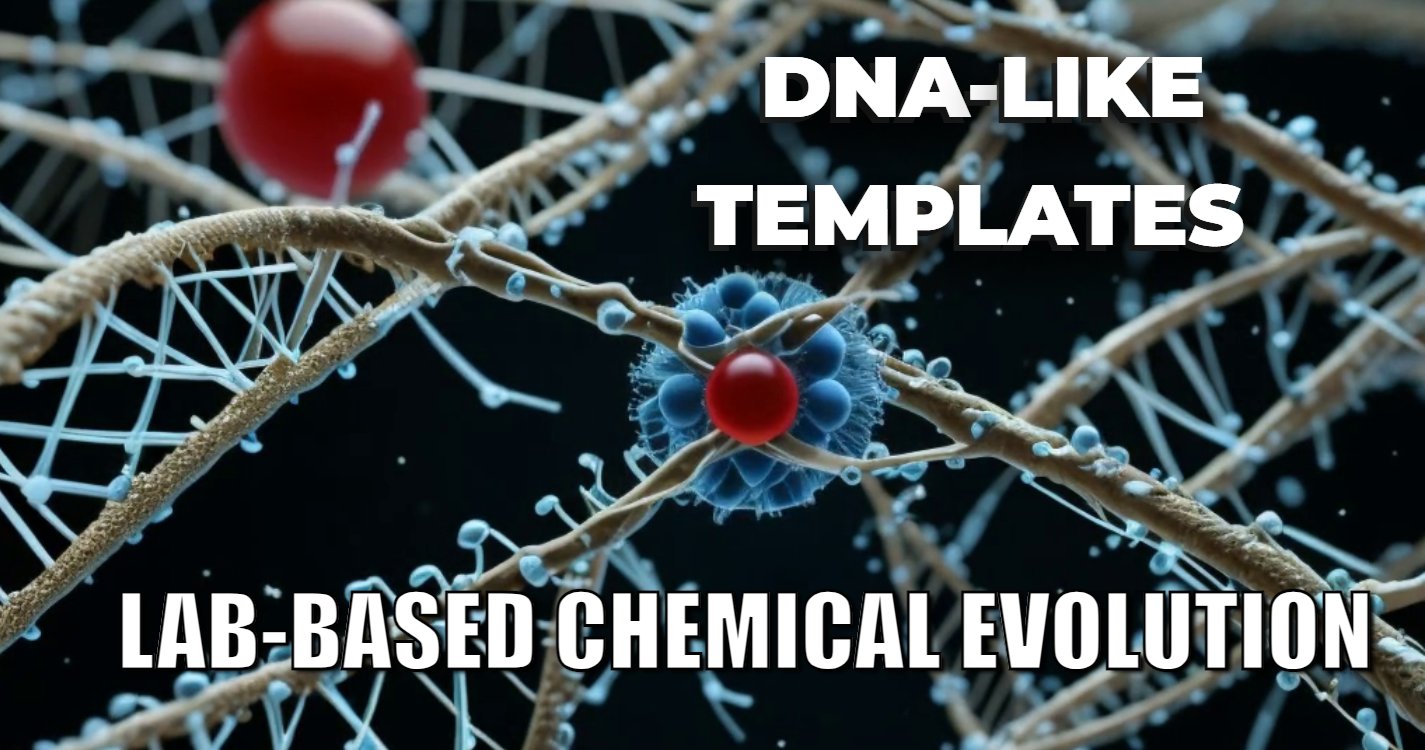The materials called supramolecular gels change from a gel to a liquid or the other way around. Some of these gels are called “smart gels.”
They can be used in many different ways, from drug delivery to optoelectronics to tissue engineering and environmental remediation. Prof. Kumaresh Ghosh and his group at the University of Kalyani have been working on both basic and applied Supramolecular Chemistry for a long time now. They are using a state-of-the-art imaging facility built with help from the Department of Science and Technology, the Indian government.
Key Highlight:
- Researchers have created smart materials that can visually identify biologically relevant ions and eliminate hazardous dyes and compounds from water.
- Supramolecular gels change from gel to sol or gel to gel in the presence of biologically relevant ions, which are used to detect and adsorb dyes from wastewater.
- They created a naphthalimide-linked novel phenol derivative for selective cyanide (CN) detection in sol-gel media.
- The reagent can be used to identify bio-relevant ionic species in an aqueous solution without sophisticated equipment.
- To sense and detect metal ions such as Fe3+, Cu2+, and Hg2+, the researchers created supramolecular gels coated with dehydroabietylamine.
Researchers have made a lot of smart materials that can see biologically important ions and remove toxic dyes and chemicals like picric acid from water. The materials called supramolecular gels change from gel to liquid or liquid to gel in the presence of biologically important ions, which are meant to be detected and adsorb different dyes from wastewater.
Fluorescence, UV-vis, and NMR are all sophisticated instruments that can be used to identify ions in solution. This is a common way to do this. Such technologies are also being used to look for toxic materials in the semisolid state, such as a supramolecular gel.
Supramolecular gels are very flexible and unique because they can be used to make noncovalent interactions that can be tuned, controlled, easily broken, and reformed again. They are called “smart gels” in many fields because of these features. They can be used to deliver drugs and detect changes in the environment. The gels are “smart” because they respond to outside stimuli, like pH, light, redox, ions, ultrasound, mechanical stress, and more. This makes them smart. Exposure of gels to different stimuli changes the molecular level interactions that lead to different changes on the macroscopic level. This causes gels to look different. So there is a lot of room for them to be used as gelation-based visual sensors that don’t need to be as complicated as spectrometers.
Using an advanced imaging facility built with help from the Department of Science and Technology, the Government of India, Prof. Kumaresh Ghosh and his group at the University of Kalyani have worked on basic and applied Supramolecular Chemistry.
They have developed a new material called a naphthalimide-linked new phenol derivative that can only sense cyanide ions (CN) in a sol-gel medium. The reagent can be used to look for bio-relevant ionic species in water without using complicated instruments. Analytical Methods has written about how this new material was made and how it was designed. In addition, a material called sulfonyl hydrazone cholesterol conjugate has been made. This material has a specific response to cyanide (CN) and fluoride (F) ions, which makes the gel-to-sol transformation happen and removes anionic dyes, like erythrosine B and uranine, from water, as well. These gels are also made from imino-phenols that have been decorated with dehydroabietylamine, which makes them able to sense and detect metal ions such as Fe3+, Cu2+, and Hg2+, among others. A journal called the New Journal of Chemistry has both of these findings in it. In the lab, gel materials are being used to look for things in biological fluid.
To find out more about supramolecular gels as smart materials in material chemistry, the researchers are making new gelators that can be used to detect ions and remove toxic chemicals from wastewater. They want to take their work even further by making the metallogels conductors with help from other scientists.
A naphthalimide-linked new pyridylazo phenol derivative for selective sensing of cyanide ions (CN−) in sol-gel medium, Ghosh, S.; Jana, P, and Ghosh, K. Analytical Methods, 2021, 13, 695-702 https://doi.org/10.1039/D0AY02033H
A sulfonyl hydrazone cholesterol conjugate: gelation, anion interaction and its application in dye adsorption, Panja, A.; Ghosh, S and Ghosh, K. New J. Chem., 2019,43, 10270-10277 https://doi.org/10.1039/C8NJ05613G
Dehydroabietylamine-decorated imino-phenols: Supramolecular gelation and gel phase selective detection of Fe3+, Cu2+ and Hg2+ ions under different experimental conditions, Ghosh, S.; Ghosh, S.; Baildya, N and Ghosh, K.
New J. Chem., 2022, (first published on 31 Mar 2022) Accepted Manuscript
https://doi.org/10.1039/D2NJ00830K




